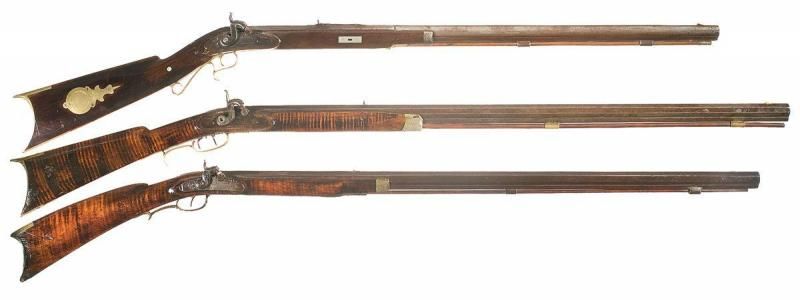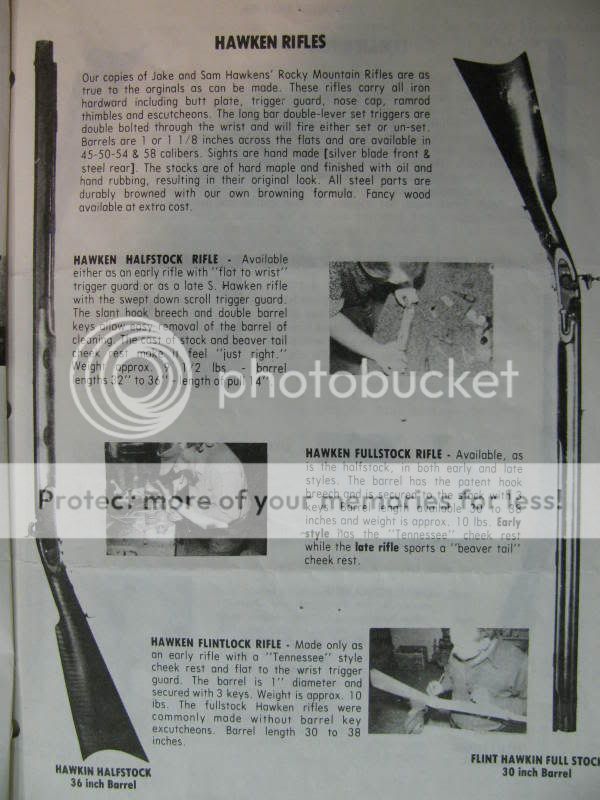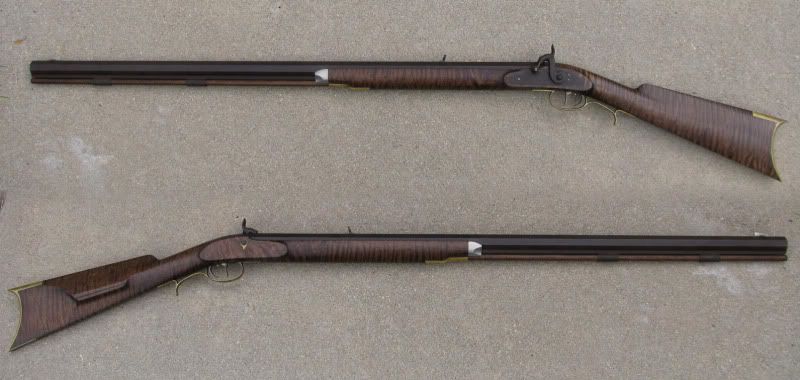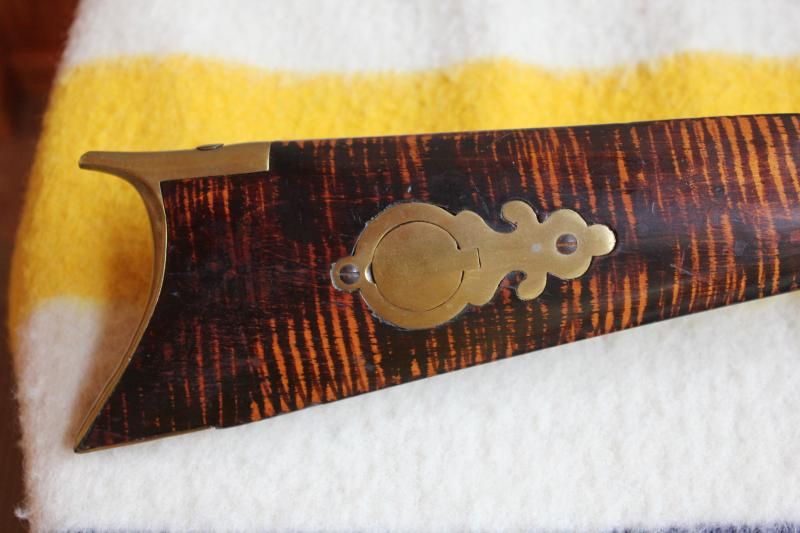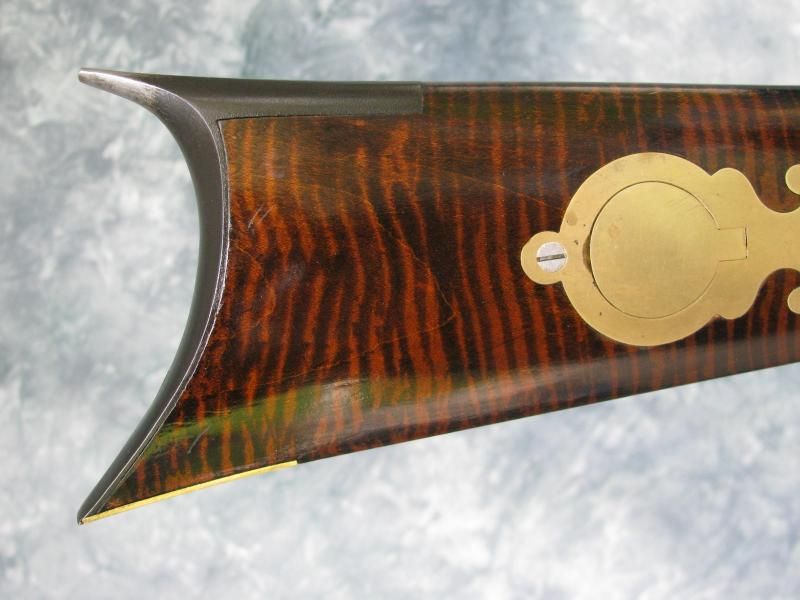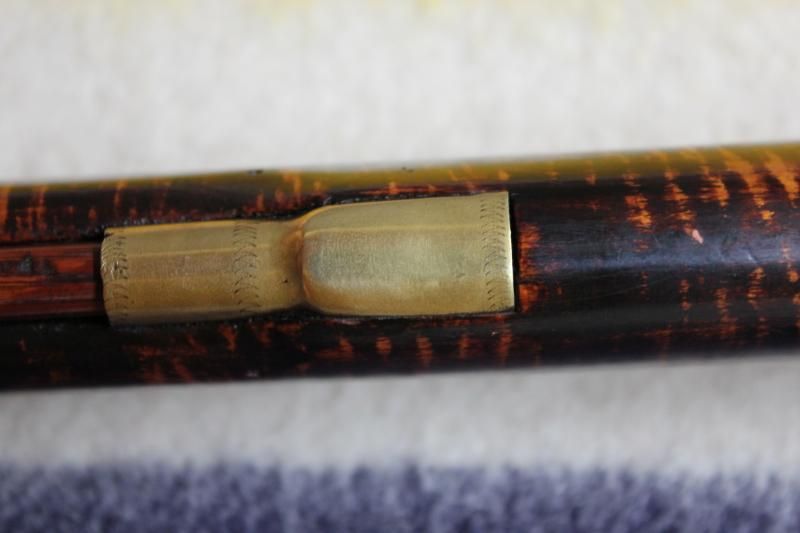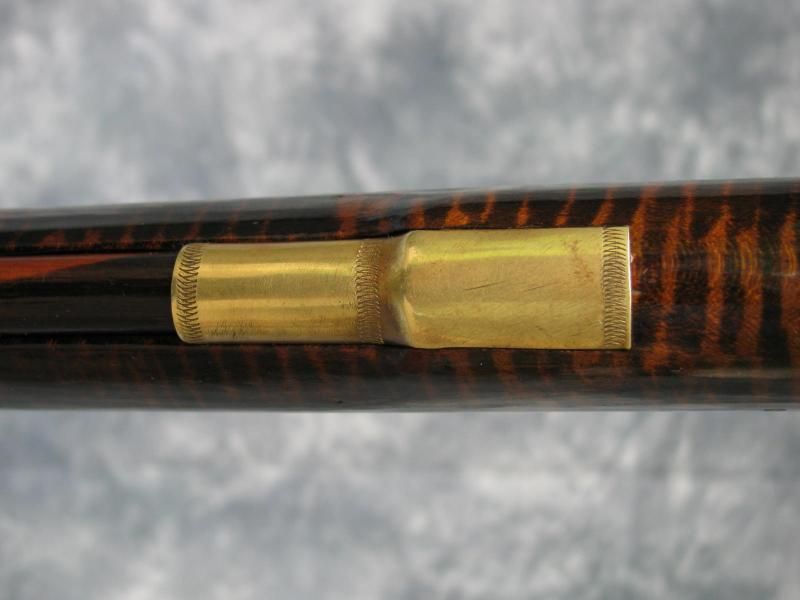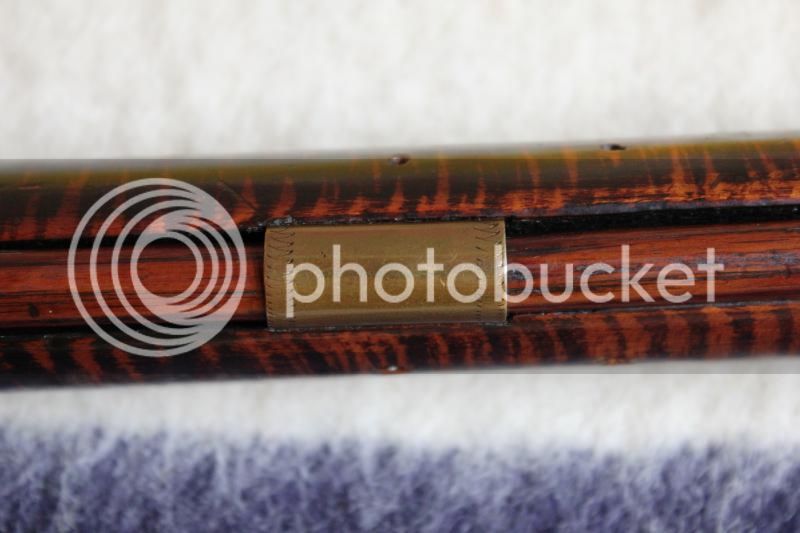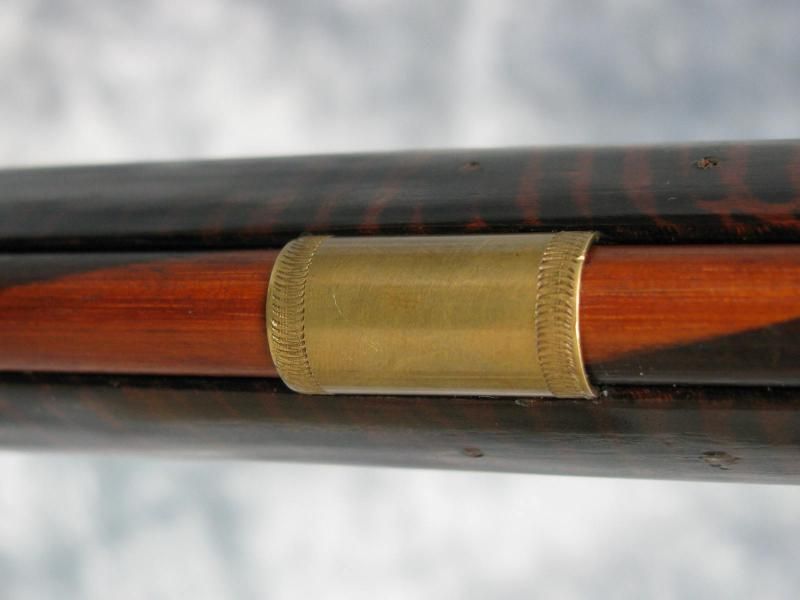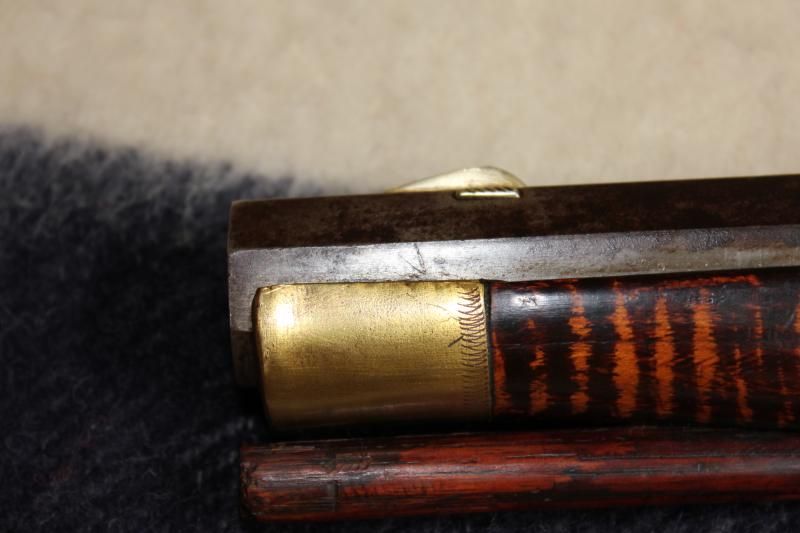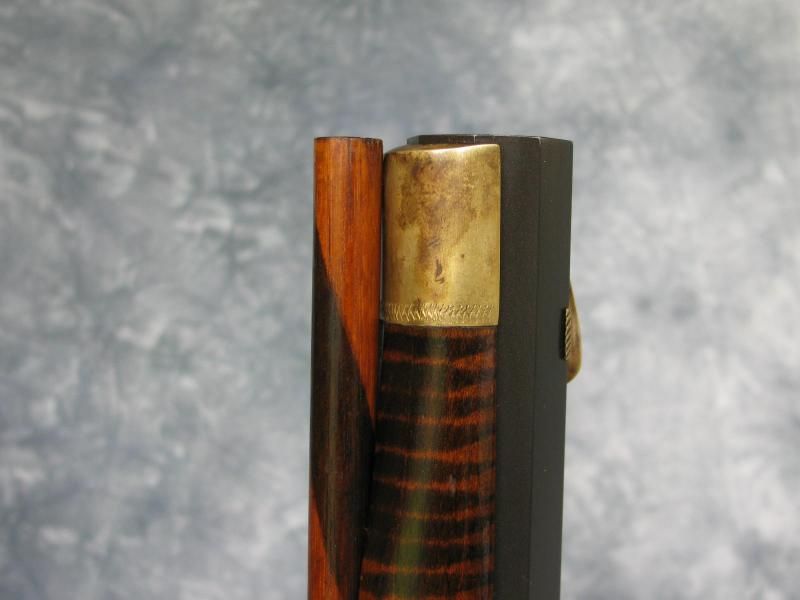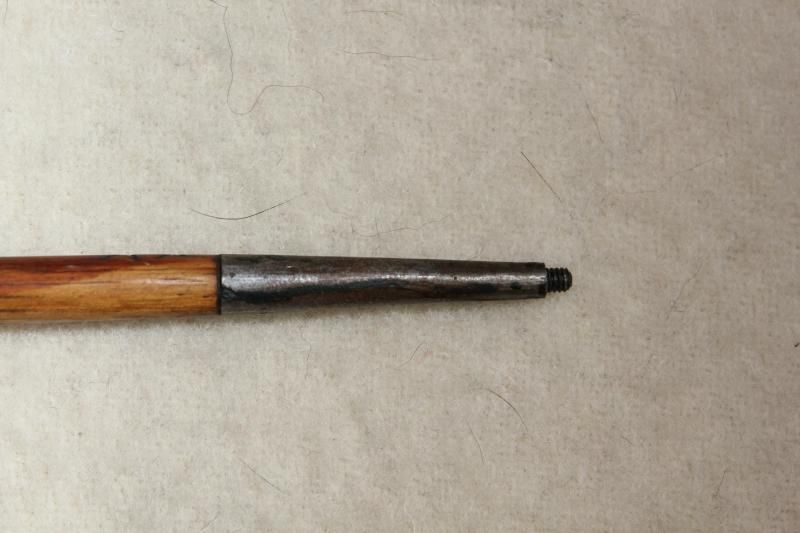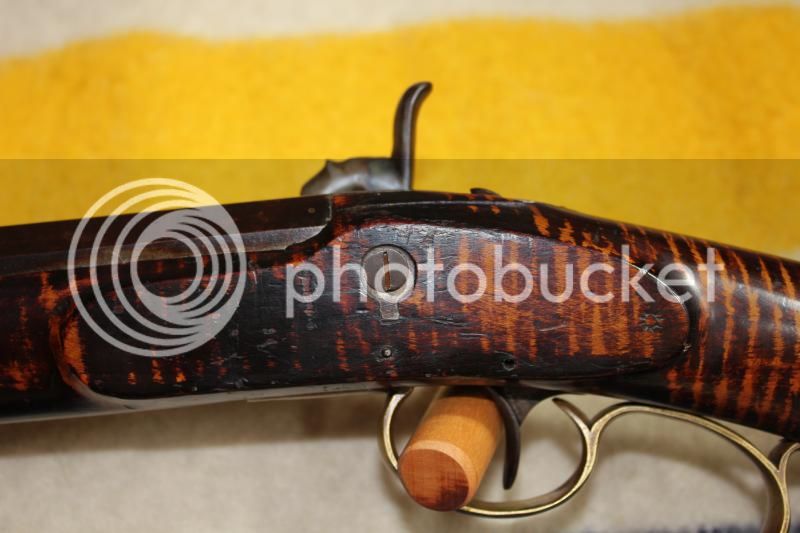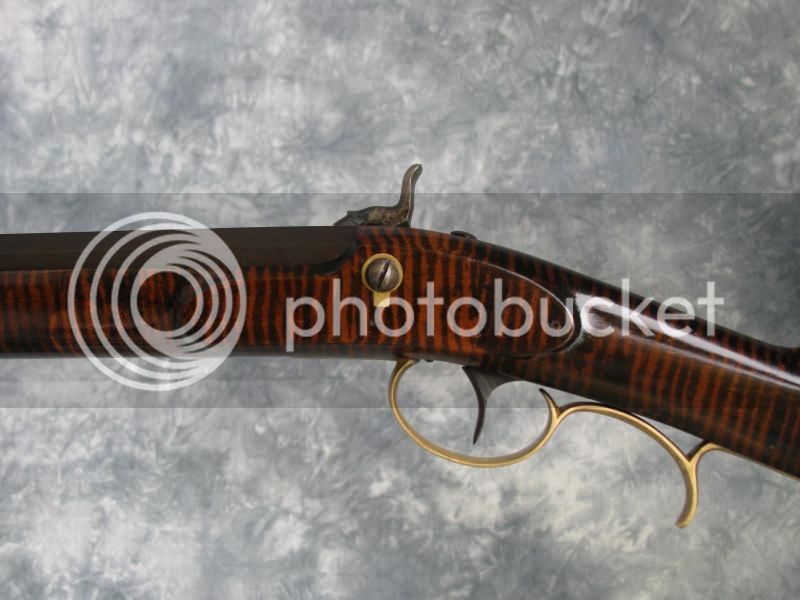plmeek
40 Cal.
This posting is in response to some interest in GRRW's Leman Trade Rifles expressed in Pat McCoy's thread Green River Hawken tumbler
The first rifle that Green River Rifle Works produced when they started up in 1972 was their half stock Leman Trade Rifle. The introductory price in 1972 for this rifle was $164.95 while the regular price was $199.95.
The price was increased to $225 in 1974 and steadily increased due to inflation after that. The 1979 price was $400 and may have gone up another $50 before they closed in the fall of 1980.
Due to some innovative use of accurate stock duplicators and milling machines to inlet the mortises on the Leman stocks, GRRW was able to keep the rate of increase in the price of the Leman Trade Rifle below that of their half stock Hawken rifles which were more complicated to build and required more labor. The Hawken rifle cost $324.95 when it was introduced in 1973 and had increased to $725 in 1979 and maybe $800 by the time they went under.
From the very beginning all the way to the end in 1980, GRRW was plagued with supply problems for the component parts they needed to build their guns. Initially, the most suitable lock for the Leman they could get in the volume they needed was the coil spring lock made by Bob Kern.
An early Leman Trade Rifle.

Close-up of the Kern lock.
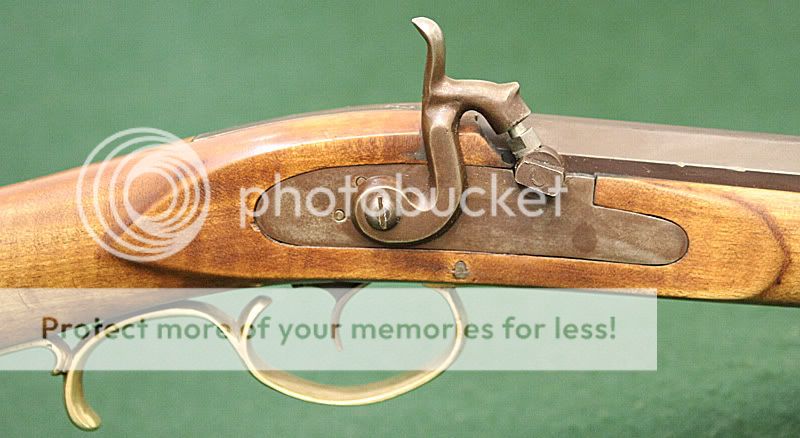
Interior of the Kern coil spring lock.
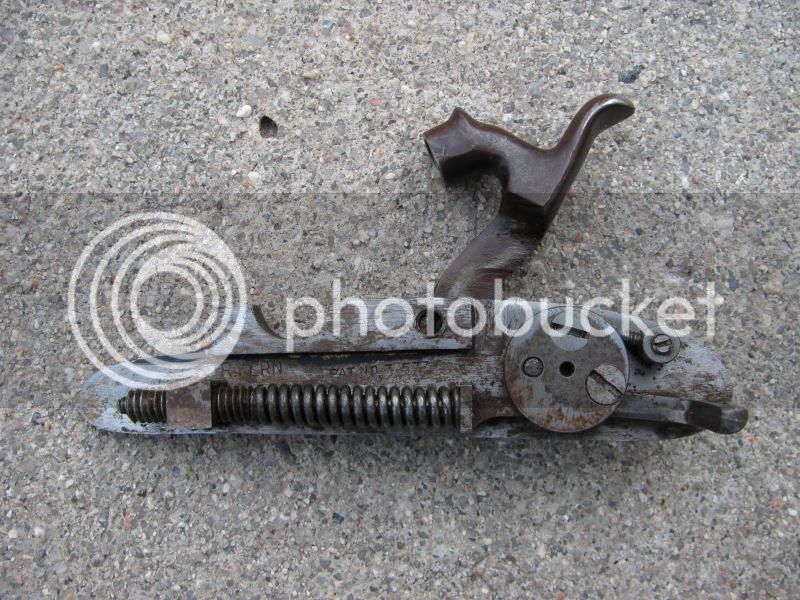
Note that the tension on the main spring could be adjusted as well as the let-off pressure on the sear.
GRRW produced 900 factory finished rifles with this lock and an untold number of kits.
By the way, the Leman Trade Rifle serial numbers began with #101. The other models began with #1. Here is a photo of Doc White shooting SN 101. (From Doc White's website)
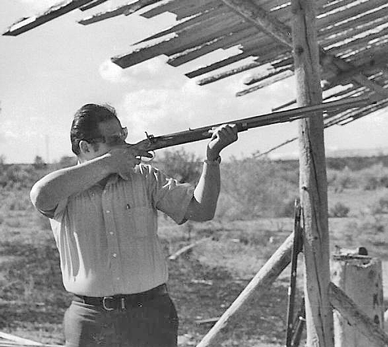
After SN 1000, GRRW starting using Ron Long's Hawken lock on their Leman Trade Rifles. In 1974, Phil "Bluejacket" Sanders redesigned the Leman Trade Rifle with a new butt plate and trigger guard that they cast themselves or had cast from proprietary molds. The redesigned rifle was slimmer than the one shown above.
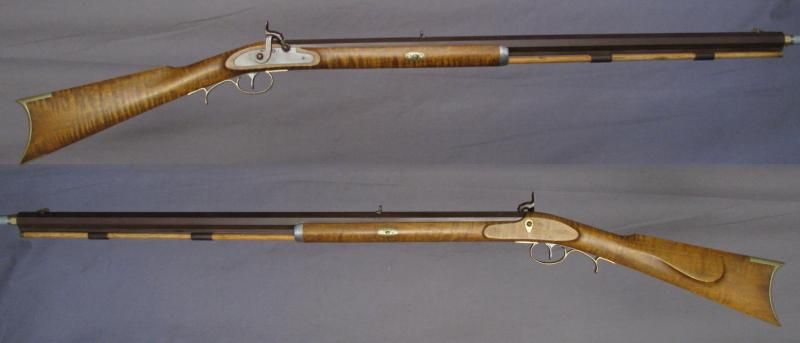
Close-up of the Long lock on the Leman rifle.
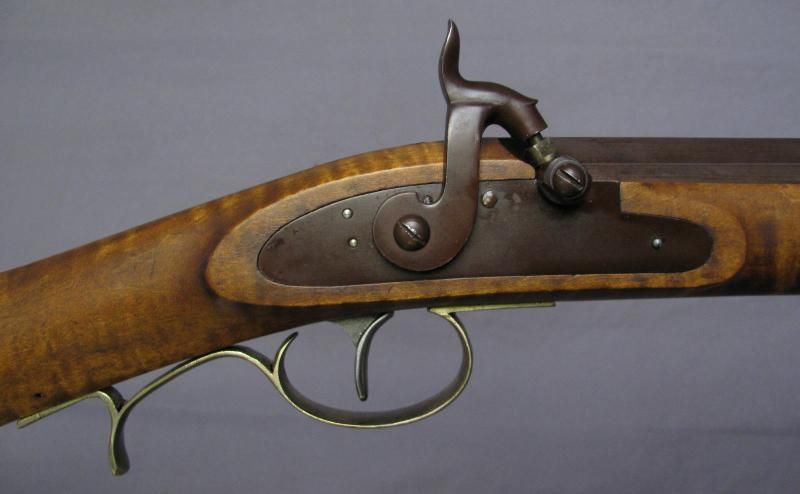
I don't have a specific serial number or date (some time in the late 70's) but eventually, GRRW started using Bud Siler's Mountain lock on their Leman rifles.
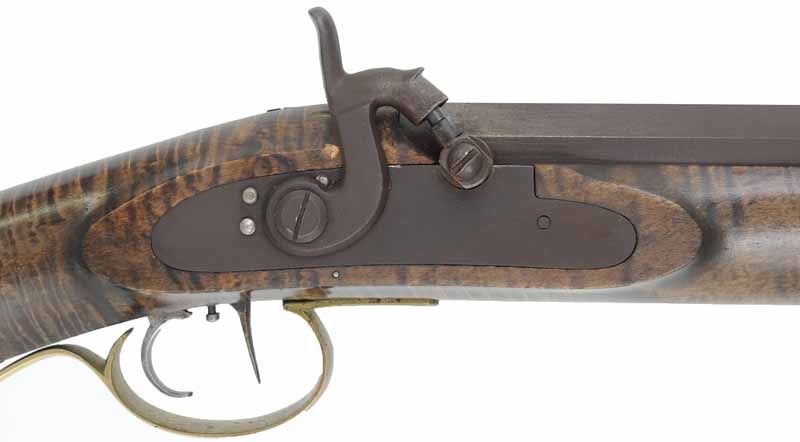
It is also worth mentioning that the early rifles that GRRW made were built with Douglas barrels. They started making their own barrels in 1974, and the lowest serial numbered Leman Trade Rifle I've seen with a GRRW barrel is just over SN 1000. The Douglas barrels have 8 lands/grooves and the GRRW barrels have 7 lands/grooves.
GRRW also produced two variants on their Leman Trade Rifles. One was a scaled down version for Ladies and youngun's with a short length of pull and a 7/8" diameter barrel that they called their Little Leman. The other also had a 7/8" barrel, but with a longer length of pull that was referred to in early catalogs and advertisements as a Leman Squirrel Rifle. Both these variants were .45 caliber or smaller.
Barrel size was always an option that the customer could specify. The standard diameter for the full size Leman Trade Rifle was 1", but we've seen some with 1-1/16" and some with 1-1/8" barrels.
GRRW may have sold close to 2000 factory Leman Trade Rifles and a correspondingly large number in kit form which made it by far their best seller.
An ad for the Leman rifles from the March-April 1979 issue of Muzzleloader magazine.
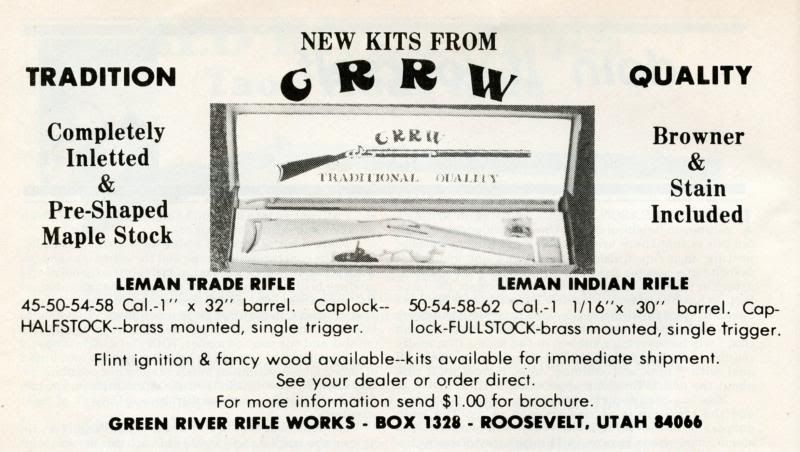
The first rifle that Green River Rifle Works produced when they started up in 1972 was their half stock Leman Trade Rifle. The introductory price in 1972 for this rifle was $164.95 while the regular price was $199.95.
The price was increased to $225 in 1974 and steadily increased due to inflation after that. The 1979 price was $400 and may have gone up another $50 before they closed in the fall of 1980.
Due to some innovative use of accurate stock duplicators and milling machines to inlet the mortises on the Leman stocks, GRRW was able to keep the rate of increase in the price of the Leman Trade Rifle below that of their half stock Hawken rifles which were more complicated to build and required more labor. The Hawken rifle cost $324.95 when it was introduced in 1973 and had increased to $725 in 1979 and maybe $800 by the time they went under.
From the very beginning all the way to the end in 1980, GRRW was plagued with supply problems for the component parts they needed to build their guns. Initially, the most suitable lock for the Leman they could get in the volume they needed was the coil spring lock made by Bob Kern.
An early Leman Trade Rifle.

Close-up of the Kern lock.

Interior of the Kern coil spring lock.

Note that the tension on the main spring could be adjusted as well as the let-off pressure on the sear.
GRRW produced 900 factory finished rifles with this lock and an untold number of kits.
By the way, the Leman Trade Rifle serial numbers began with #101. The other models began with #1. Here is a photo of Doc White shooting SN 101. (From Doc White's website)

After SN 1000, GRRW starting using Ron Long's Hawken lock on their Leman Trade Rifles. In 1974, Phil "Bluejacket" Sanders redesigned the Leman Trade Rifle with a new butt plate and trigger guard that they cast themselves or had cast from proprietary molds. The redesigned rifle was slimmer than the one shown above.

Close-up of the Long lock on the Leman rifle.

I don't have a specific serial number or date (some time in the late 70's) but eventually, GRRW started using Bud Siler's Mountain lock on their Leman rifles.

It is also worth mentioning that the early rifles that GRRW made were built with Douglas barrels. They started making their own barrels in 1974, and the lowest serial numbered Leman Trade Rifle I've seen with a GRRW barrel is just over SN 1000. The Douglas barrels have 8 lands/grooves and the GRRW barrels have 7 lands/grooves.
GRRW also produced two variants on their Leman Trade Rifles. One was a scaled down version for Ladies and youngun's with a short length of pull and a 7/8" diameter barrel that they called their Little Leman. The other also had a 7/8" barrel, but with a longer length of pull that was referred to in early catalogs and advertisements as a Leman Squirrel Rifle. Both these variants were .45 caliber or smaller.
Barrel size was always an option that the customer could specify. The standard diameter for the full size Leman Trade Rifle was 1", but we've seen some with 1-1/16" and some with 1-1/8" barrels.
GRRW may have sold close to 2000 factory Leman Trade Rifles and a correspondingly large number in kit form which made it by far their best seller.
An ad for the Leman rifles from the March-April 1979 issue of Muzzleloader magazine.






